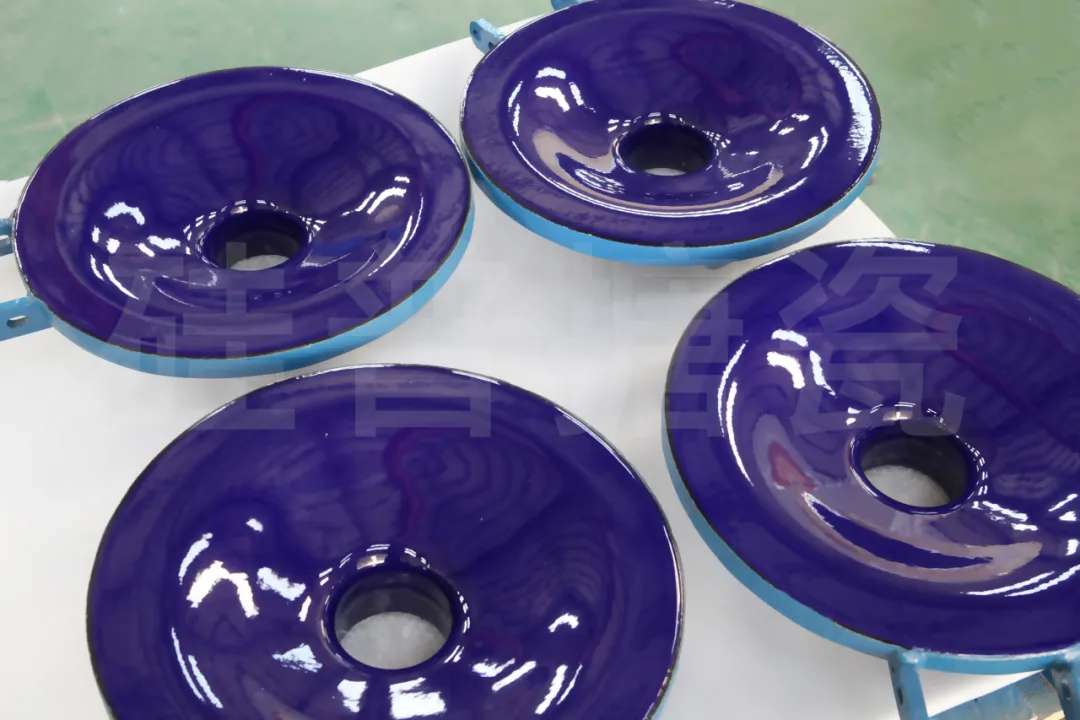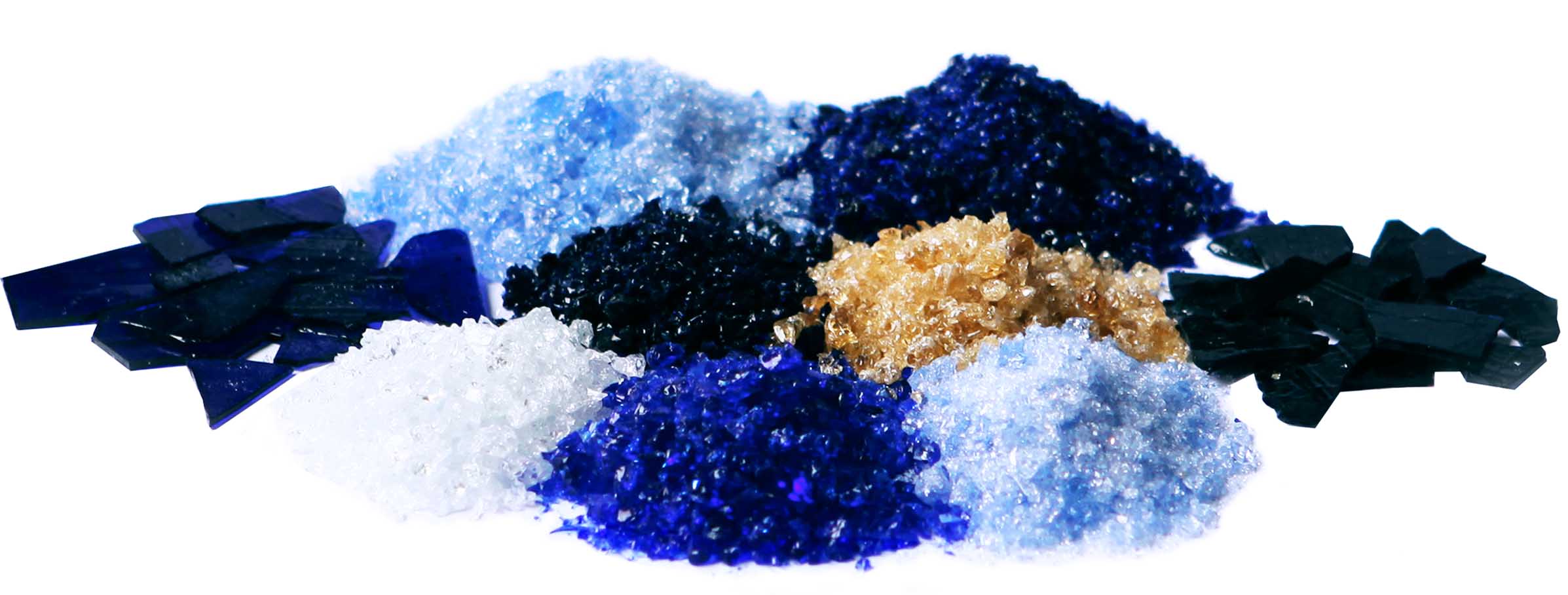Enamel glass, a versatile and visually striking material, has been used for centuries in various applications, from decorative items to industrial products. But what exactly is enamel glass made of, and what gives it its unique properties?
Enamel glass is essentially a combination of glass and enamel, which is a vitreous, usually opaque, coating. The primary components of enamel glass include:
Glass Base: The foundation of enamel glass is typically made from a type of glass known as soda-lime glass, which is composed mainly of silica (SiO2), soda (Na2O), and lime (CaO). This base gives enamel glass its smooth, glass-like qualities and makes it highly durable and resistant to thermal stress.
Enamel Coating: Enamel, which is fused to the glass during the manufacturing process, is made from a mixture of finely ground glass, metal oxides, and minerals. These components are melted at high temperatures to form a solid, smooth coating. The metals used in enamel can vary, but common ones include copper, cobalt, and iron. These metal oxides contribute to the color and opacity of the enamel, giving it its characteristic lustrous finish.
Coloring Agents: To create the vibrant range of colors that enamel glass is known for, manufacturers incorporate various metallic oxides and pigments into the enamel mix. For example, cobalt oxide produces deep blue hues, while chromium oxide can yield greens, and copper oxides are used for reds and browns. These coloring agents are often added in small quantities, but their impact on the final product's appearance is significant.
Fluxing Agents: Fluxes, such as borax or lead oxide, are sometimes added to the enamel mix to help the coating fuse more effectively to the glass surface during the firing process. These agents lower the melting point of the enamel, ensuring a smooth, even coating.
How Is Enamel Glass Made?
The process of making enamel glass involves several key steps:
Preparation of Materials: The glass base is first melted and shaped into the desired form. This can range from simple sheets of glass to intricate pieces like tiles or cookware.
Enamel Application: The enamel, which has been prepared by mixing glass powder, metal oxides, and fluxing agents, is applied to the surface of the glass. This can be done through spraying, dipping, or brushing techniques, depending on the intended design.
Firing: Once the enamel is applied, the glass is heated in a kiln at temperatures typically ranging from 700 to 900°C (1300 to 1650°F). This high heat causes the enamel to fuse onto the glass, creating a durable, hard surface that is both smooth and glossy.
Finishing: After firing, the enamel glass may undergo additional finishing processes such as polishing, etching, or further coloring. These steps help enhance the appearance of the enamel glass and make it suitable for its intended use.
Uses of Enamel Glass
Enamel glass is prized for its beauty, durability, and resistance to corrosion, making it ideal for a variety of applications. It is commonly used in:
Cookware and Bakeware: Enamel-coated cast iron and glass are often used to make pots, pans, and baking dishes because the enamel surface is resistant to scratching, staining, and high temperatures.
Decorative Items: Enamel glass is also used for jewelry, art pieces, and even glassware. The wide array of colors and finishes available allows for intricate designs and stunning aesthetics.
Architectural Glass: Enamel glass is used in architecture, especially for facades, windows, and panels, where its combination of durability and visual appeal is highly valued.
Electronics: Enamel-coated glass is sometimes used in certain electrical components, particularly in applications requiring heat resistance and electrical insulation.
Why Is Enamel Glass Special?
The unique combination of glass and enamel gives enamel glass several remarkable properties, including:
Durability: The enamel coating is incredibly hard and resistant to scratches, chips, and wear.
Heat Resistance: Enamel glass can withstand extreme temperatures, making it ideal for use in cookware and industrial applications.
Chemical Resistance: The enamel surface is highly resistant to corrosion and staining, making it suitable for long-term use in harsh environments.
Aesthetic Appeal: With its glossy finish and vibrant colors, enamel glass can be used to create visually stunning designs, both functional and decorative.
Conclusion
Enamel glass is a remarkable material that combines the best qualities of glass and enamel coatings. By blending durability, heat resistance, and aesthetic versatility, it has earned its place in both everyday items and high-end decorative pieces. Whether in cookware, art, or architecture, enamel glass continues to captivate with its beauty and strength.

Enamel glass is essentially a combination of glass and enamel, which is a vitreous, usually opaque, coating. The primary components of enamel glass include:
Glass Base: The foundation of enamel glass is typically made from a type of glass known as soda-lime glass, which is composed mainly of silica (SiO2), soda (Na2O), and lime (CaO). This base gives enamel glass its smooth, glass-like qualities and makes it highly durable and resistant to thermal stress.
Enamel Coating: Enamel, which is fused to the glass during the manufacturing process, is made from a mixture of finely ground glass, metal oxides, and minerals. These components are melted at high temperatures to form a solid, smooth coating. The metals used in enamel can vary, but common ones include copper, cobalt, and iron. These metal oxides contribute to the color and opacity of the enamel, giving it its characteristic lustrous finish.
Coloring Agents: To create the vibrant range of colors that enamel glass is known for, manufacturers incorporate various metallic oxides and pigments into the enamel mix. For example, cobalt oxide produces deep blue hues, while chromium oxide can yield greens, and copper oxides are used for reds and browns. These coloring agents are often added in small quantities, but their impact on the final product's appearance is significant.
Fluxing Agents: Fluxes, such as borax or lead oxide, are sometimes added to the enamel mix to help the coating fuse more effectively to the glass surface during the firing process. These agents lower the melting point of the enamel, ensuring a smooth, even coating.
How Is Enamel Glass Made?
The process of making enamel glass involves several key steps:
Preparation of Materials: The glass base is first melted and shaped into the desired form. This can range from simple sheets of glass to intricate pieces like tiles or cookware.
Enamel Application: The enamel, which has been prepared by mixing glass powder, metal oxides, and fluxing agents, is applied to the surface of the glass. This can be done through spraying, dipping, or brushing techniques, depending on the intended design.
Firing: Once the enamel is applied, the glass is heated in a kiln at temperatures typically ranging from 700 to 900°C (1300 to 1650°F). This high heat causes the enamel to fuse onto the glass, creating a durable, hard surface that is both smooth and glossy.
Finishing: After firing, the enamel glass may undergo additional finishing processes such as polishing, etching, or further coloring. These steps help enhance the appearance of the enamel glass and make it suitable for its intended use.
Uses of Enamel Glass
Enamel glass is prized for its beauty, durability, and resistance to corrosion, making it ideal for a variety of applications. It is commonly used in:
Cookware and Bakeware: Enamel-coated cast iron and glass are often used to make pots, pans, and baking dishes because the enamel surface is resistant to scratching, staining, and high temperatures.
Decorative Items: Enamel glass is also used for jewelry, art pieces, and even glassware. The wide array of colors and finishes available allows for intricate designs and stunning aesthetics.
Architectural Glass: Enamel glass is used in architecture, especially for facades, windows, and panels, where its combination of durability and visual appeal is highly valued.
Electronics: Enamel-coated glass is sometimes used in certain electrical components, particularly in applications requiring heat resistance and electrical insulation.
Why Is Enamel Glass Special?
The unique combination of glass and enamel gives enamel glass several remarkable properties, including:
Durability: The enamel coating is incredibly hard and resistant to scratches, chips, and wear.
Heat Resistance: Enamel glass can withstand extreme temperatures, making it ideal for use in cookware and industrial applications.
Chemical Resistance: The enamel surface is highly resistant to corrosion and staining, making it suitable for long-term use in harsh environments.
Aesthetic Appeal: With its glossy finish and vibrant colors, enamel glass can be used to create visually stunning designs, both functional and decorative.
Conclusion
Enamel glass is a remarkable material that combines the best qualities of glass and enamel coatings. By blending durability, heat resistance, and aesthetic versatility, it has earned its place in both everyday items and high-end decorative pieces. Whether in cookware, art, or architecture, enamel glass continues to captivate with its beauty and strength.






